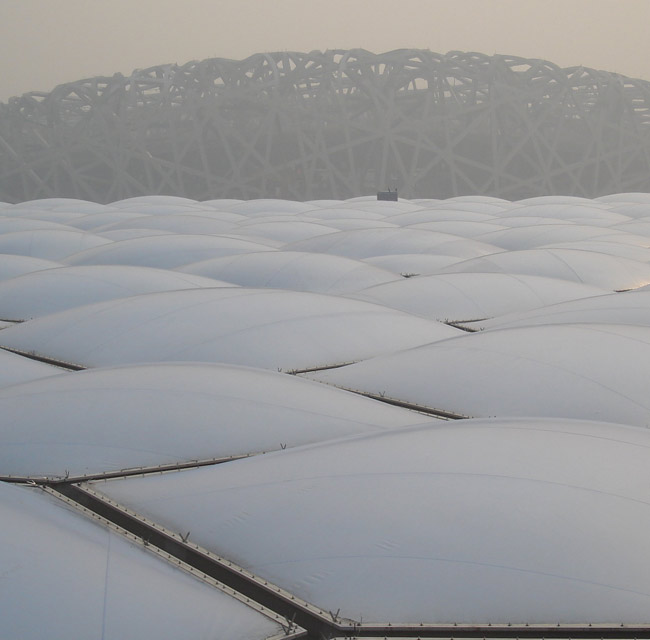How Bubble Wrap Could Power the Future

Editor's Note: Each Wednesday LiveScience examines the viability of emerging energy technologies — the power of the future.
Swim suits that mimic shark skin are not the only high-tech pool materials to be found at the Beijing Olympics. The National Aquatics Center, or "Water Cube," is surrounded by a light-weight polymer foil that significantly reduces the energy that goes into construction.
The thin transparent material, called ETFE (Ethylene Tetrafluoroethylene), is segmented into 3,000 air-filled cushions that let in light but hold in heat.
"It is like very sophisticated bubble wrap," said Annette LeCuyer, an architecture professor at the University at Buffalo.
LeCuyer has recently published a book about ETFE. She explained to LiveScience why it has been one of the highlights of this year's Olympics.
Non-stick foil
ETFE was developed in the 1970s for wire insulation, but it has become an important architectural element in the past two decades.
Sign up for the Live Science daily newsletter now
Get the world’s most fascinating discoveries delivered straight to your inbox.
The material, which is similar to Teflon, is stretched out into a large sheet, or foil, less than 250 microns thick, and then folded over and sealed to form an air-filled cushion.
"What you end up with is a very thick wall that is mostly made of air," LeCuyer said. "It acts like a duvet blanket."
Other plastic foils are also used for walls and roofs, but ETFE has the advantage of both being transparent and fire-safe (it won't shatter like glass or drip down onto people's heads like other polymers). And because it is non-stick, rain will wash away dirt and dust that collects on the outside.
Water Cube
The cushions are strong enough to support the weight of a car, and if punctured, they can be repaired relatively easily. Still, an intruder could simply cut through them with a knife, so architects do not typically use them at ground level.
The largest cushions for the Water Cube are roughly 33 feet (10 meters) across and 10 feet (3 meters) thick at their center. The aquatic center's walls actually have three layers of cushions, which provide the same insulation as two layers of triple-glazed glass, LeCuyer said.
However, she estimates that the same building built with glass would have cost twice as much because of the extra support structure that would be needed to hold up the heavier glass. Moreover, the total energy required to construct a glass building is 200 times that of an ETFE building, according to Vector Foiltec — the British-German company that provided the 100,000 square meters (24 acres) of ETFE foil for the Water Cube.
The Cube is the largest ETFE installation, surpassing the Eden Project — the world's largest greenhouse located in Cornwall, England.
Future projects using ETFE foil include sports stadiums, leisure parks and a giant indoor Amazonian rainforest being built in Iowa. But use in private homes is not likely.
"It may look simple, but the engineering is very sophisticated," LeCuyer said. "You probably won't find it at Home Depot anytime soon."










